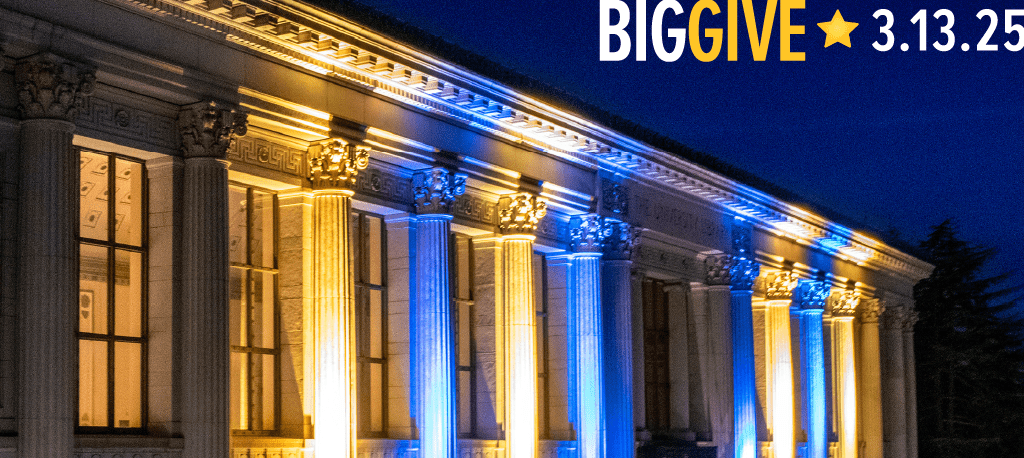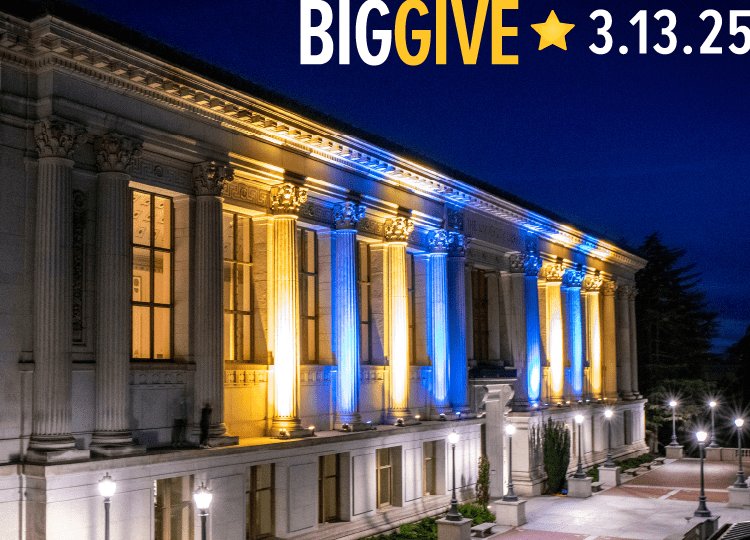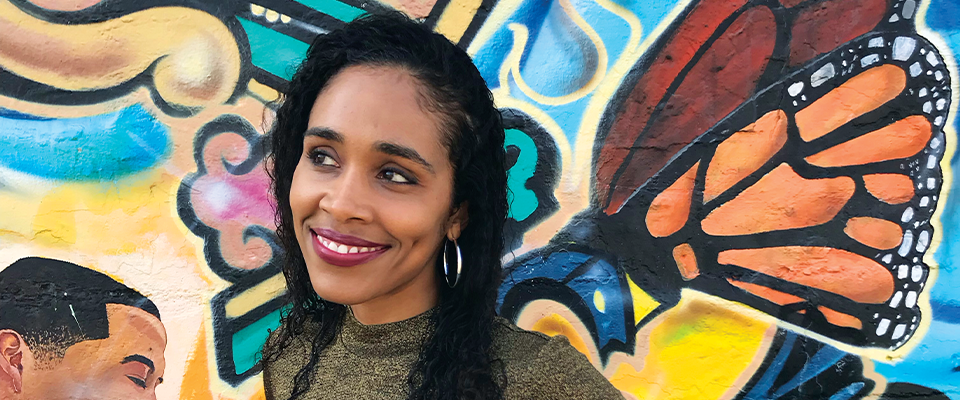“Everyone’s captivated by astronomy, by the stars, what’s out there in the universe. I wanted to share my work with the community.”
NIA IMARA ISN’T CONTENT TO JUST LOOK AT THE STARS, so she’s printing a 3-D replica of one she can hold in her hands. “We can’t actually touch these things,” says the astrophysicist and artist, but it’s about imagining the possibilities. “I’m a big believer in that; we can see things not as the way they are. We have the ability to project our vision of the world onto the world.”
Imara’s work has been rooted in trying to bring the magic of the universe closer to a wider audience—first during her time at UC Berkeley as the Astronomy Department’s first Black female Ph.D. in astrophysics, then through her postdoctoral fellowship at the Harvard & Smithsonian Center for Astrophysics. But what’s unique about her approach is that she does it not just through her science work but through art and community building, too.
Imara, who recently started as an assistant professor of astronomy and astrophysics at UC Santa Cruz, just launched her newest project, Onaketa, an organization she founded that provides free science and math tutoring to underserved students of color. It’s a personal project for Imara, who grew up in the Bay Area with parents who are both educators. Her commitment to community activism only grew as she put down roots in Oakland through endeavors like Generation of Oakland, a project documenting multi-generational stories of Black life in the city, and later by opening a gallery in the Uptown neighborhood to showcase her work and the work of other Black artists on their own terms.
Onaketa, an initiative led entirely by Black and brown women, continues that work. The program isn’t just about improving student performances but also celebrating and uplifting them in ways that support “the beauty and intellect” inherent in each student in a world and education system that often discourages them. “I grew up in an environment where love for my people and for our culture was expressed all around me,” she says. “I was raised to identify with Black people around the globe.”

But, to Imara, her interests are larger than just global identity: “I approach science from the perspective of wanting to understand what my place is in the universe,” she says. And what better way to find that understanding than by studying exactly how the universe began. “I can remember as a child, I was interested in sort of the big, big questions, you know, the philosophical questions, questions of a theological nature,” says Imara. “[In high school] I had a physics teacher who approached us and encouraged us to take his class. From day one, I realized that science was going to be the way that I could address some of these really burning questions that I had.”
At Berkeley, she looked for those answers in stellar nurseries, the place where stars are born. These nurseries, also known as molecular clouds, “are enormous structures of cold, dark, gas, and dust,” Imara explains. The wavelength of the light they produce is invisible to the human eye, only coming to life through radio and infrared telescopes, then using “false color imaging to visualize them,” she says. The resulting images are soft, technicolored clouds stretching across a vast universe.
Her love of art was being cultivated at the same time as her love of science. “I saw these beautiful images from the Hubble Space Telescope, and that just captivated me.” It was the light, she says. “Astronomers are experts on understanding what light is. We can’t touch or sense most of the objects that we study, other than from the light that we receive from them.” They have this in common with painters, she says. Color is just light, after all.
Imara was part of the Breakthrough Starshot program led by Harvard astronomy Professor Avi Loeb, among others. The project is part of a series of initiatives that grapple with the question “Are we alone in the universe?” Imara’s collaborators see her creativity as an important asset to her work with the project. Being an artist is “another way of looking at the world,” Loeb says. When you’re trying to innovate, there’s no one way to think, so it’s complementary that she has talent in both science and art, he says.

Berkeley astronomy Professor Emeritus Gibor Basri, who worked closely with Imara during her time at the university, agrees. “She has quite a unique approach, which I think people have begun to appreciate. We talk about how diversity will open up new possibilities, and she’s a prime example of that. She thinks of stuff that no one has done and does it—pulls it off.”
Now Imara is trying to expand her field’s diversity by bringing science from the lab to the community. “It was a conscious choice to try to make my astronomy people-centered,” she says, pointing to astronomy’s ability to fascinate the public. “Everyone’s captivated by astronomy, by the stars, what’s out there in the universe,” Imara says. “And so I made a conscious choice a long time ago that I wanted to share my work with the community, with Black folks and other people of color, especially.” The work can’t just live in the scientific community, she says, which is one of the reasons she’s committed to doing public-facing work in ways ranging from school assemblies to PBS documentaries. “It’s a whole other kind of fun to be able to bring science talks to public audiences,” she says. “That’s something that I love to do.”
Bringing her work to the public also helps demystify astronomy and demonstrate its long, cross-cultural history. “How did certain African cultures practice science in the past? I came to understand and see that [in] different cultures, you have certain famous scientists who really blended the arts and sciences,” she says. “I started reading more and educating myself more about how science is practiced in non-Western traditions. I think that was part of my process of starting to blend art and science.” One of the most valuable things she took from expanding the scope of her field was the use of storytelling. “Story is so powerful,” she says. “Because it’s the way that we understand the world. It’s a way that we understand ourselves better, it’s the way that we make connections with people.”

In her art, too, Imara tries to tell a fuller story. “One strong motivation has been wanting to portray Black people in all the beauty that I see in them,” she says. “I take a lot of joy in that.” She approaches portraiture like a still life, placing her subjects in such a way that the viewer has no choice but to be drawn in. In a still life, she explains, “All of the focus and attention is on that vase of flowers or that bowl of fruit, and I wanted to do the same thing for people. The way that manifested in most of my portraits is that you don’t see a background where there’s a context of the physical location, or even the time that the person is existing in; I just want everything to be drawn to that person.”
Being seen is a theme that comes up in her science as well. “Some of the inequities [in science] are particularly noticeable compared to other fields. But for me, it’s a much bigger issue about education and racial injustice in this country.” With that in mind, much of her community work has been focused on creating pathways to science and math for Black and brown students. “It’s frustrating for me, when people just talk about things at a superficial level and then try to solve the problem through diversity programs.” Understanding the foundational issues—from the roots and causes of racism and school segregation to higher numbers of Black and indigenous children living in poverty—must be coupled with a real willingness to do the work change requires, Imara says. “I think that institutions, universities, should take more responsibility and have more accountability in terms of who they’re serving.” It’s not simply about the numbers, it’s about “imagining our own standards and changing the culture of science, changing the culture of academia and education.” Imara describes a new kind of science, one that is concerned with more than just research, one in which “we engage with social issues, with issues of history and racism.”
Basri agrees. “[In astrophysics], until very recently, you could count the number of Black Ph.D.’s being awarded in the entire country, as zero, one, or two, basically,” he says. But, like Imara, he’s hopeful that rethinking how students are engaged in the sciences will lead to change. “Slowly, we’ll provide more role models, and other folks will see that it’s possible to do this. I’m hopeful that in the future there will be more graduate students of color, and then that will translate later into more faculty of color.” Imara’s career can serve as an example. “She has a brilliant future,” says Loeb. “[It’s like] seeing a flower when it starts to blossom. It’s just the beginning.”
Ashawnta Jackson is a writer based in Brooklyn, NY.



















